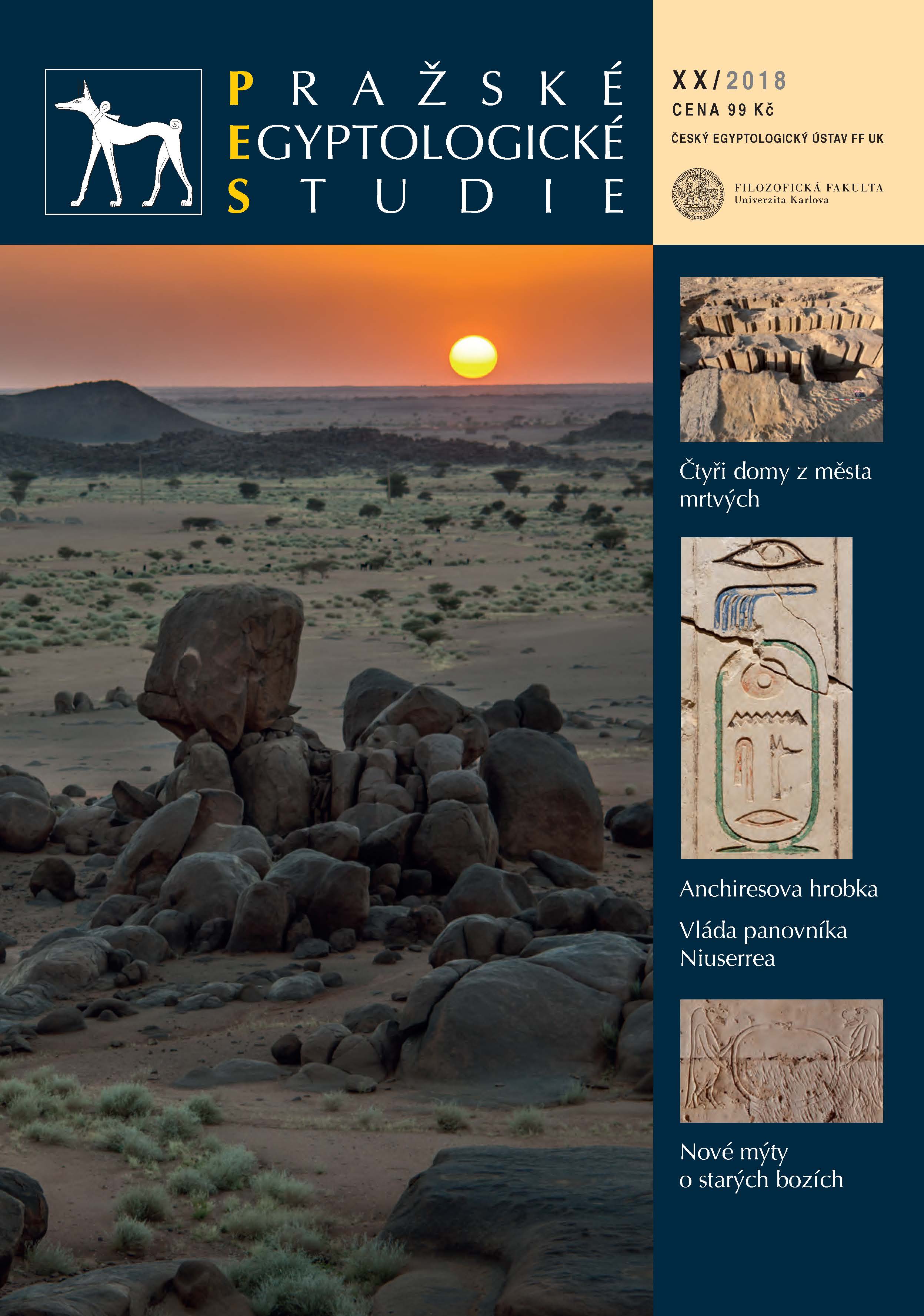Hrobka muže bez tváře. Předběžná zpráva o výzkumu hrobky Anchirese (AS 98), inspektora kadeřníků královského paláce
Tomb of a faceless man. Preliminary report on the excavations of the tomb of Ankhires (AS 98), the inspector of hairdressers of the Great House
Author(s): Veronika Dulíková, Miroslav Bárta, Martin Odler, Marie Peterková HlouchováSubject(s): History, Archaeology
Published by: Univerzita Karlova v Praze - Filozofická fakulta, Vydavatelství
Keywords: Abusir South;Old Kingdom;Fifth Dynasty;Nyuserre;mastaba;relief decoration;later burial;coffin;amulet;
Summary/Abstract: During the autumn season of 2016, the tomb of an inspector of hairdressers of the Great House, Ankhires (AS 98), commenced excavation. The works were finished in the autumn season of 2017. In the architecture of the mastaba, two building phases were detected. Its cultic places were accessible from the north. A corridor chapel, where two levels of mud floor, a possible mud brick altar and a northern niche in the western wall were uncovered, leads to Room 2, giving access to abundantly decorated Room 1 with polychrome reliefs in at least three registers. The wall decoration of the funerary chapel was largely destroyed; only one block remained in situ and several fragments of the false door were found in the debris. In the core of the mastaba, only one shaft was uncovered. It was 11.75 m deep with a burial chamber at its bottom. An entrance into the burial apartment was in the western wall of the shaft. Neither the bottom of the shaft, nor the burial chamber were finished, though. This fact is fairly surprising taking into consideration the tomb’s intricate architecture. The tomb is preliminarily dated to the late Fifth Dynasty (Nyuserre – Djedkare). Interestingly enough, six late burials in wooden coffins (67–69/AS98/2017, 99–101/AS98/2017) from the end of the First Millennium BC were excavated by the western part of the entrance into the mastaba, and to the east of its eastern outer wall. The coffins were decorated very simply. However, the timber was very fragile and that is why the coffins had decayed, with the exception of two examples (67/AS98/2017 and 68/AS98/2017). In front of the eastern outer wall, three faience amulets were found (96/AS98/2017, 103/AS98/2017, 105/AS98/2017). These might be related to the late burials.
Journal: Pražské egyptologické studie
- Issue Year: 2018
- Issue No: 20
- Page Range: 12-26
- Page Count: 15
- Language: Czech

